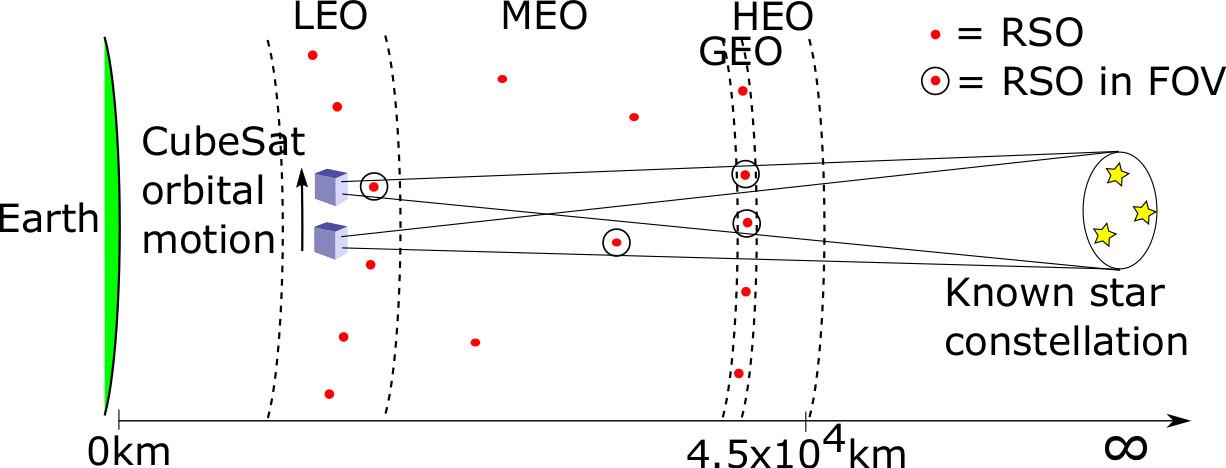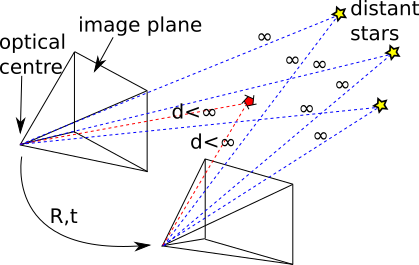Space Domain Awareness
What is SDA?
Resident space objects (RSO) are man-made objects that orbit the Earth. These include satellites, spacecraft and other space installations. Another class of RSOs are junk objects or debris that form as byproduct of space launch, space flight, or spacecraft malfunction/destruction. Currently, there are more than 23,000 space debris of size as small as 5 cm. However, it is known that there are smaller objects that exist in even greater numbers. Space domain awareness (SDA) is the capability to detect, track, and predict the motion of all RSOs, including space debris.

Why is SDA important?
Virtually all aspects of modern life depend on satellite technology, including communications, media, commerce, navigation, agriculture and meteorology. There are more than a thousand operating satellites in orbit, amounting to Trillions of dollars worth of investments, that underpin modern technology. Protecting these assets from interference and destruction is of utmost importance. Developing SDA is critically important to prevent the loss of space assets via unintended collisions.
The worsening pollution of space by junk and debris makes the prospect of widespread space asset destruction realistic. Regular collisions involving active satellites and space junk occur; in fact, one to two operating satellites are lost per year due to collisions. More recently, the increasing militarisation of space, which involves covertly placing weapons in orbit and the potential usage of space itself as a battlefield, makes it vitally important to monitor space utilisation.
Our work on SDA
In collaboration with Inovor Technologies and DST Group, we are developing a space-based space surveillance (SBSS) system to achieve SDA. The idea is to deploy a network of CubeSats that collectively observe and near-Earth orbit using optical sensors (cameras). The CubeSats will be placed in Low Earth Orbit (LEO) (altitudes of 500–700 km). Unlike most imaging satellites which fixate on the Earth’s surface, the SDA CubeSats will be pointing outwards. This allows the CubeSats to clearly observe up to the farthest orbital belts, in particular, the Geosynchronous Orbit (GEO) that contains the most critical space assets (satellites for communications, broadcasting, intelligence, etc.).

Surveillance of GEO
The concept of operations involve each CubeSat orienting itself (by means of an attitude determination and control system or ADCS) to “lock on” a predefined region in GEO while in orbit. Any RSO that passes through the CubeSat field of view (FOV) can thus be detected. Fixating on a region in GEO while imaging causes stars to be imaged as streaks, and RSOs in the surveiled GEO region to be observed as dots.

Surveillance of LEO
The speed of RSOs in LEO relative to the SBSS satellites will be much higher, hence they tend to form “streaks” when imaged under long exposures with the optical sensing payload. The detection of LEO objects is typically accomplished by examining the linear signature of the streaks.

Based on the above settings, we are investigating the mathematical foundations of optical detection of RSOs in GEO and LEO, and the application of computer vision and machine learning algorithms to perform the detection. In particular, we have developed several track-before-detect (TBD) algorithms that are specialised for optical detection of RSOs in GEO, and deep learning-based techniques for streak finding in LEO surveillance.
Results
Challenge Yourself
With the Advanced Concepts Team (ACT) of the European Space Agency (ESA), we organised an international competition on SDA. The dataset is still available for downloading to support your own algorithm development.
Media Coverage
- Getting Junk Out of Space (The Lead)
- Telescope-Peering AI Challenged to Spot Mystery Space Objects (ESA)
- Adelaide Uni AI research helps ESA locate mystery space objects (SpaceConnec)